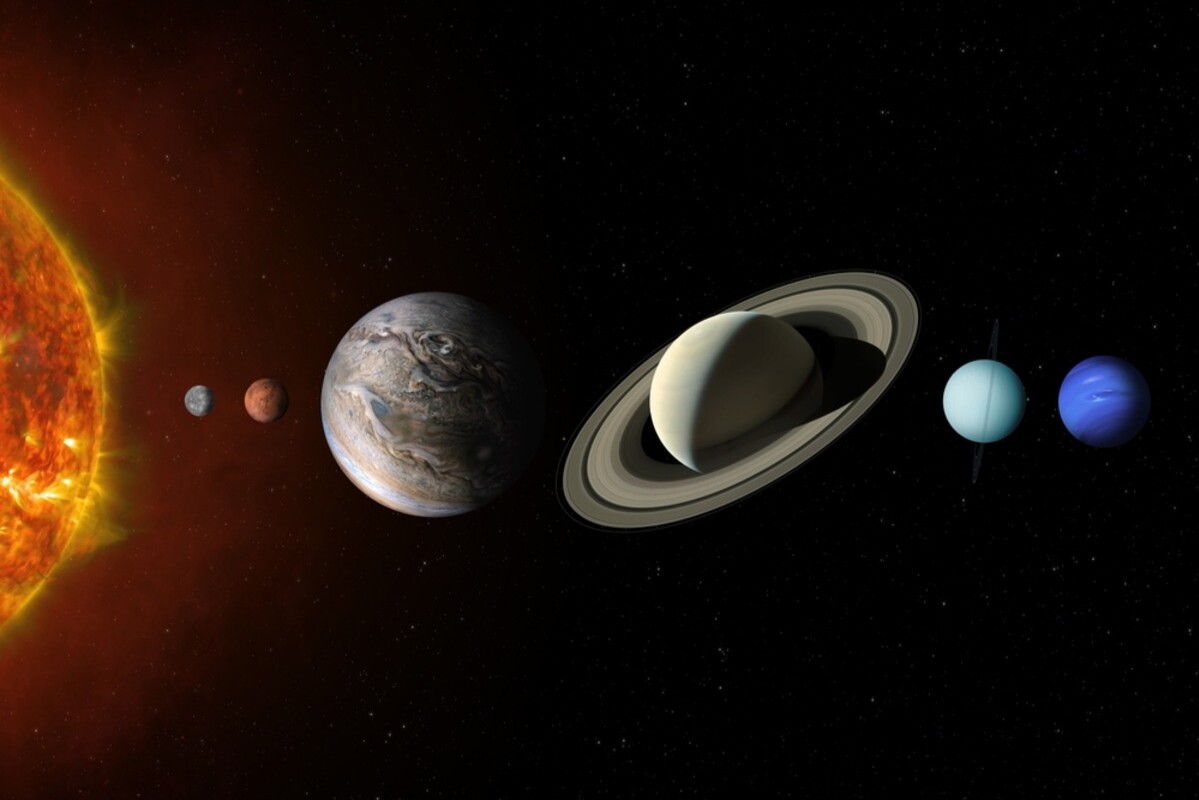Planetary alignments are awe-inspiring celestial events that can be observed without the need for specialized equipment. The next such alignment is set to occur on August 28, 2024.
Planetary alignment is an astronomical term describing the event when multiple planets gather closely on the same side of the Sun simultaneously. The more colloquial term “planetary parade” refers to the presence of several planets in the night sky at a given time.
Celestial gathering
The upcoming celestial alignment of the planets is scheduled to occur on August 28, 2024, the Moscow Planetarium told TASS. In the early morning hours, six planets – Mercury, Mars, Jupiter, Uranus, Neptune, and Saturn – will align in the sky. While Mercury, Mars, Jupiter, and Saturn will be visible to the naked eye, Mercury may be more challenging to spot as it will be closer to the horizon. To observe Neptune and Uranus, you’ll need a telescope or high-powered binoculars.
Viewing conditions for each planet
Let’s take a closer look at the viewing conditions for each planet:
- Yellowish Saturn (magnitude 0.6) will be present in the Aquarius constellation, visible to the naked eye from late evening.
- Neptune (magnitude 7.8) in the nearby Pisces constellation will require high-powered binoculars to be seen.
- Uranus (magnitude 5.7) will rise later at night, located in the Taurus constellation and observable with high-powered binoculars.
- Jupiter (magnitude -2.3) and Mars (magnitude 0.8) will rise next, visible to the naked eye in the Taurus constellation. The waning crescent Moon will also be present, adding to the captivating view.
- At dawn, Mercury (magnitude 1.7) will rise in the Leo constellation, but you’ll need to act quickly as the Sun will soon rise alongside it.
Moreover, to ensure you accurately identify the planets, consider downloading the Sky Tonight app, a free stargazing tool that makes it easy to locate and learn about any celestial object in the sky. Simply point your device at the sky, and the app will provide the names and details of the planets.
Read more: China finds new method to extract water from lunar soil
Optimal viewing locations and dates
The planetary alignment will be visible across much of the world during the morning hours. While August 28, 2024, is a general date when the alignment will be well-observed, the ideal date may vary depending on your location. Here’s a list of different locations and the dates when the planets were seen in the smallest sector of the sky during this alignment:
- Abu Dhabi: The planets were seen in a 172-degree sky sector on August 23.
- Hong Kong: The planets were seen in a 173-degree sky sector on August 23.
- Athens: The planets were seen in a 167-degree sky sector on August 24.
- New York: The planets were seen in a 166-degree sky sector on August 24.
- Tokyo: The planets were seen in a 168-degree sky sector on August 24.
- Berlin: The planets were seen in a 162-degree sky sector on August 26.
- London: The planets were seen in a 162-degree sky sector on August 26.
- Reykjavík: The planets were seen in a 158-degree sky sector on August 26.
- Mexico: The planets will be seen in a 178-degree sky sector on August 28.
São Paulo: The planets will be seen in a 165-degree sky sector on August 30. - Sydney: The planets will be seen in a 161-degree sky sector on August 30.
Also, keep in mind that tall buildings or high mountains near your location might obstruct the view of the planets. To see how the alignment will appear from your specific location on a given date, use the Sky Tonight app’s Time Machine feature to adjust the date and time, and view the sky map. You can also switch to the AR mode to see how the planets fit with your surroundings.
Remember, the alignment is not limited to a single day, so if you miss the peak on August 28, try to catch the planets on the days before or after the main event.
For more miscellaneous news, click here.








